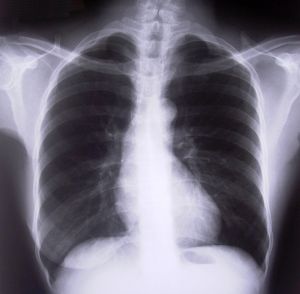New Study Significantly Increases the Estimated Number of Annual Deaths Involving Hospital Errors
 When people go to the hospital, whether for routine care or an emergency situation, they unfortunately face more risks than just the injury or condition that brought them there. Medical mistakes contribute to a substantial number of injuries and deaths in the U.S., but definitive numbers are very difficult to establish. A recently-published series of studies suggest that “adverse events,” as medical professionals call hospital errors, may occur in up to twenty-one percent of hospitalizations. The new research suggests that adverse events may be the cause of, or a contributing factor in, between 210,000 and 440,000 deaths in hospitals every year. This marks a significant increase from an influential 1999 study, which put that number at just under 100,000.
When people go to the hospital, whether for routine care or an emergency situation, they unfortunately face more risks than just the injury or condition that brought them there. Medical mistakes contribute to a substantial number of injuries and deaths in the U.S., but definitive numbers are very difficult to establish. A recently-published series of studies suggest that “adverse events,” as medical professionals call hospital errors, may occur in up to twenty-one percent of hospitalizations. The new research suggests that adverse events may be the cause of, or a contributing factor in, between 210,000 and 440,000 deaths in hospitals every year. This marks a significant increase from an influential 1999 study, which put that number at just under 100,000.
The Institute of Medicine (IOM) published a paper in November 1999 on two studies examining deaths in hospitals caused by medical errors, using data from 1984. It estimated that between 44,000 and 98,000 annual deaths were the result of “preventable medical errors,” defined as “the failure of a planned action to be completed as intended or the use of a wrong plan to achieve an aim.” This may include medical mistakes such as incorrect medications, incorrect dosages, or surgical errors; injuries from burns, falls, bed sores, or infections; and even violent injuries or suicide.
The September 2013 issue of the Journal of Patient Safety included a study by toxicologist John T. James, who runs an organization called Patient Safety for America. James’ paper places the annual estimate of adverse event-related deaths between 210,000 and 440,000. He specifically references the IOM study and the need for analysis of more recent data. No consistent or uniform standards exist nationwide for identifying or classifying adverse events, so James used the Global Trigger Tool, which was developed a decade ago to facilitate such efforts.
Many adverse events, if they result in harm to a patient, could lead to a viable claim for medical malpractice. Where James’ study might be most useful to advocates for medical malpractice victims is his categorization of adverse events into five categories, based on the nature of the underlying error:
–Errors of commission: a mistake that harms a patient, such as performing the wrong procedure, or performing the correct procedure incorrectly;
–Errors of omission: failure to perform a necessary procedure;
–Errors of communication: this can occur between medical professionals, or between a medical professional and a patient, such as a failure to warn a patient of specific risks or limitations associated with a medication or procedure;
–Errors of context: failure to take into account some specific condition affecting a patient; and – Diagnostic errors: incorrect or incomplete diagnoses, resulting in the wrong treatment, a delay of necessary treatment, or no treatment at all.
Medical professionals have a very high standard of care when treating patients. An individual who suffers injuries and other losses due to a breach of this duty of care may be able to recover damages. Wais, Vogelstein, Forman, Koch & Norman’s medical malpractice attorneys protect the rights of Maryland patients and their families. We can visit you in your home or at the hospital and are available 24/7. To schedule a free and confidential consultation regarding your case, please contact us online, at (410) 567-0800.
